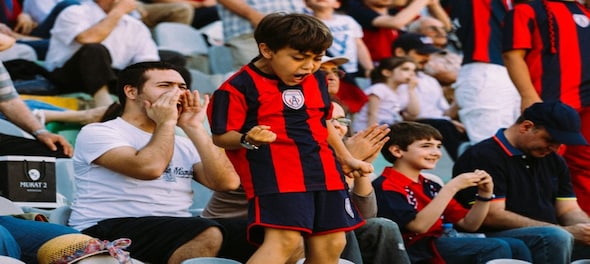
I was Chief Marketing Officer of the sports business of Star TV from 2014 to 2018, a period during which major leagues such as Pro Kabaddi, Indian Super League, Premier Badminton League were conceptualised, created, marketed and established. I also led marketing for BCCI and ICC cricket - Test, ODI and T-20 and this included the ODI world cups as well as the T20 world cups.
After the transition of IPL to Star, I worked on plans to energise it further. The business had 12 channels in multiple languages covering all major sports. I also ran the star sports (dot) com predecessor to Hotstar.
It was value creation at its best. In more ways than one, I learned my marketing basics all over again. The critical catalyst for this reappraisal and relearning was the need to appreciate fan passion. There may be no biz like showbiz but there is nothing as deep as fan involvement with live sport.
Fan culture, or fandom, can apply to communities built around a shared enjoyment of any aspect of popular culture, such as books, movies, TV shows, music bands, sports or sports teams, etc. Participatory cultures involve fans acting not only as consumers but also as producers and curators of some form of content. Most fan cultures such as cinema, music etc have elements of participatory culture. However, live sports fandom encourages creative expression and artistic production by its participants.
Also Read
Why do we remain loyal sitting in front of the television despite the futility of our participation? What makes us scream our lungs out and jump in our living room when bare common sense tells us that it has little effect on the actual outcome? My learning was that fandom is an act of conscious development of the self. Being a fan is to anchor one’s identity formation and build social identification with millions of others. In many cultures, it can be a liminal passage to adulthood.
Emile Durkheim, towering sociologist and profound intellectual, wrote in his seminal work ’The Elementary Forms of the Religious Life’ that whenever a subculture raises anything to divinity, it is - in fact - also simultaneously worshiping itself. Durkheim elaborated on the concept of the ‘totem’ and hence totemic symbols. In his words "On the one hand,
This is a universal truth. We all yearn to belong. Modern living has become more virtual, abstract and transactional. Hence, we crave identity and belongingness. Our fandom is a platform for fellowship amounting to kinship. It captivates us via affiliative energy. We sense a congregational power. The sport, team or sportsperson - our totem - becomes a physical representation of that need for identity and unity. It may be manifested as a lapel pin, a cap, a shirt, a flag or collective idolisation of the past greats. It binds like little else in today’s world.
Faith in institutions—joint family, employer, social movements—is dwindling, though such institutions, social, private or governmental, once rooted us to something larger. In fandom, as in religious worship, our social connections are brought to life. Fandom serves as a reminder of our interconnectedness and dependency. ‘We will beat team xyz’, we say. It projects a complete identification. But it is also an entitlement. After all, fandom is a selfless commitment. The fan directly or indirectly pays for it all - tickets, merchandise, content and advertising.
Fan devotion savours of religion be it a pilgrimage to revered stadia, songs, chants, slogans and rhythms or frameworks for ritualism. Thinking in terms of good and evil, divine outcomes, a teleological destined ‘to belong’ etc . All of these suggest a religious impulse.
Being a fan allows us to feel kinship with complete strangers. Like religious affiliation, many sports linkages are inherited. Fans talk about generations of followership and fandom. No matter what the track record, switching to a rival team is apostasy and heresy.
Like religious catharsis, sports celebrations are effusive. There is a frenzy that is unique. It cuts across distinctions of class and creed. Durkheim called it "collective effervescence." He theorised that it was a charge, a kind of electricity that gets socially generated when groups participate in rituals. Post-game celebrations and day-after parades, with feverish outpouring of emotion, demonstrate spontaneous solidarity.
Elias Canetti wrote in 1960 his ground-breaking work ‘Masse und Macht’ (Crowds and Power) that a crowd needs a binder for uninhibited integration. Once that is done, the crowd is like one individual. It becomes a collective whole. How else can one explain millions of individuals becoming one in mind and spirit.
“It is only in a crowd that man can become free of the fear of being touched. That is the only situation in which the fear changes into its opposite. The crowd he needs is the dense crowd, in which body is pressed to body; a crowd, too, whose psychical constitution is also dense, or compact, so that he no longer notices who it is that presses against him. As soon as a man has surrendered himself to the crowd, he ceases to fear its touch. Ideally, all are equal there; no distinctions count. The man pressed against him is the same as himself. He feels him as he feels himself. Suddenly it is as though everything were happening in one and the same body.”
Media scholar Henry Jenkins define a ‘participatory culture’ more specifically as one that consists of:
Fandom is not just about reciprocal giving but about circular giving. A fan’s joy is often intangible. Whether in an online social post, fan e-zine or fan blog, the entire community is addressed. Fans as content producers value autonomy, competence, membership and generosity. User-generated content creates emotional connection between people who care about something. Old media created a mass audience. New media provide a platform for people to provide value for each other.
Fandom is not just a sum of reciprocal relationships between individuals but a system in which reciprocation is distributed across the community. To a fan, the value lies not just in the creation of art or writing about their sports heroes but in the consumption of those works by other fans, and the sense of community created by being read, watched and appreciated.
The word ‘fan’ comes from the word fanatic and there is an ‘us vs them’ divide between fan culture and mainstream society. The discrediting of fan culture reveals conservative society’s fear of modernity. Another theory forwards the idea that some fans use fan culture as a form of psychological compensation, meaning that fans make up for the lack of fulfilment in their lives with intense focus on other realities.
Making interpersonal relationships with those who are a part of fan culture is a social experience. Within fan culture, there are fans, fanatics, and deviants. Fans seek connections with others via a shared loyalty. Fanatics see fandom as integral to their self-esteem. Media scholar Joli Jensen wrote in her work ‘Fandom as Pathology: The Consequences of Characterization’ that there is a very fine line between being a normal fan and excessive fandom and this line is crossed when the difference between reality and fantasy becomes unclear.
Social hierarchies exist within fan cultures. Members of any subgroup tend to have a consensus regarding which behaviours are acceptable, i.e., which behaviours constitute true fans or desperate over conformers. I remember I had done a campaign for the English Premier League that made fun of the ‘fake fans’ who engage in a faux show of fandom to gain social currency but are easily detected by those who have deeper passion and commitment.
Defining a place for oneself in fan culture depends on navigating the fine line between adoration, consumerism, expertise, and commitment. Fandom is at the heart of marketing sociology and is a neglected subject outside media studies.
It has rich learnings for all.
Shubhranshu Singh is vice president, marketing - domestic & IB, CVBU, Tata Motors. He writes Simply Speaking, a weekly column on Storyboard18. Views expressed are personal.
 Note to readers: Storyboard18’s new Month In Focus initiative spotlights themes and topics that are pushing marketers to reshape and rethink how brands interact with today’s customers. Our first theme is Just Sports, a special spotlight on sports marketing. We bring to you stories of how marketers are harnessing the power of technology, innovation and creativity in sports to create powerful storytelling in campaigns that increase affinity and loyalty with audiences. From traditional sports platforms around cricket to emerging games and the rise of esports, we get leading voices from the marketing and sports worlds to give us sharp and fast insights into future-facing marketing practices. Also, tune in for analyses which will surface ideas and strategies that are helping brands to level up experiences and storytelling with authentic collaborations. So watch this space for Just Sports.
Note to readers: Storyboard18’s new Month In Focus initiative spotlights themes and topics that are pushing marketers to reshape and rethink how brands interact with today’s customers. Our first theme is Just Sports, a special spotlight on sports marketing. We bring to you stories of how marketers are harnessing the power of technology, innovation and creativity in sports to create powerful storytelling in campaigns that increase affinity and loyalty with audiences. From traditional sports platforms around cricket to emerging games and the rise of esports, we get leading voices from the marketing and sports worlds to give us sharp and fast insights into future-facing marketing practices. Also, tune in for analyses which will surface ideas and strategies that are helping brands to level up experiences and storytelling with authentic collaborations. So watch this space for Just Sports.(Edited by : Priyanka Deshpande)
First Published: May 9, 2022 7:33 PM IST
Check out our in-depth Market Coverage, Business News & get real-time Stock Market Updates on CNBC-TV18. Also, Watch our channels CNBC-TV18, CNBC Awaaz and CNBC Bajar Live on-the-go!


Andhra Pradesh Lok Sabha elections: A look at YSRCP candidates
Apr 25, 2024 6:54 PM
Lok Sabha elections 2024: Banks and schools to remain closed in these cities for phase 2 voting
Apr 25, 2024 5:33 PM
Andhra Pradesh Lok Sabha elections: Seats, schedule, NDA candidates and more
Apr 25, 2024 5:16 PM

